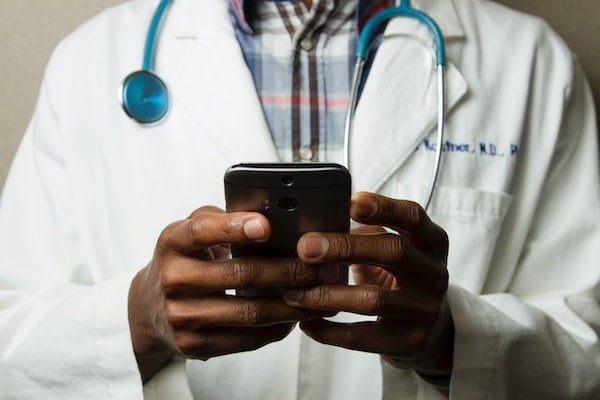Published on
Ensuring Integration Between Healthcare and Education

Throughout the COVID-19 pandemic, the entire healthcare sector has been reminded of just how vital the contributions of the entire workforce are to the health and safety of all. Prior to the pandemic, there were many calls to address the workforce challenges faced by all branches of healthcare. As a former hospital administrator, I personally experienced and can therefore understand how challenging understaffing is at all levels of a healthcare organization, particularly in a time of crisis and ever-evolving competition.
Without question, when we look at healthcare workforce development, we must always think about pipeline programs from K-12 to workforce and post-secondary—clear pathways to help individuals understand the plethora of opportunities in healthcare and the importance of reskilling and upskilling. Education and training providers also need to specifically always seek to engage healthcare organizations in the development and refinement of academic and certificate programs. Throughout higher education and workforce training, we often hear about how important it is to learn from our business and industry partners. However, these times require true integration. Beyond listening and learning, we must work as one to ensure workforce and training needs are met through innovation and transformation.
Collaboration As the Key to Successful Workforce Development—Now and in the Future
During my healthcare leadership experience, I saw this firsthand when we worked with both a community college and university partners to develop new academic programs in areas like health coaching and EMS education, among others. I also experienced it when we brought leaders and faculty together in an academic and healthcare collaborative to truly ensure the nursing program met the needs of our healthcare system. The key in all of these experiences was bringing faculty and healthcare leaders together regularly to ensure all curriculum, clinical experiences, simulations and training were refined and updated to meet the needs of today as well as those of the future.
Dignity Health Global Education Helps Bridge the Gaps
With a strong passion for and commitment to innovating and transforming the healthcare workforce, I recently joined Dignity Health Global Education (DHGE), a leading healthcare workforce development company. Throughout my healthcare and higher education leadership experience, I have witnessed both the importance and impact of an authentic student-centric experience that brings together all the resources and support networks to ensure success for each student, which includes building an engaging and thoughtful online community that features short courses, certificates, degree programs, digital credentials and workforce development solutions customized for the healthcare industry. In building on the idea of customized solutions, it is equally important to leverage partnerships to help bridge the educational and industry gaps. DHGE, for example, has done this through delivering programs co-created with top-ranked academic institutions, like Duke CE and the University of Arizona’s Eller Executive Education, and made with leaders in the healthcare space, including CEOs, CFOs and CNOs.
As referenced earlier, the secret sauce to bridging educational and industry gaps truly revolves around the importance of having professional insight from healthcare leaders and professionals from start to finish. Through conversations with healthcare leaders, you can identify popular leadership training topics such as authentic leadership in healthcare, especially through change, and finance. You can become aware of the need to focus on building trust, communication skills, conflict management, decision-making, delegation, employee motivation and engagement, and fostering innovation in organizational culture.
Investing in Skills-Based, Effective Learning to Improve Patient Outcomes
In healthcare, learning outcomes influence patient health, so much so that it can even be the difference between life and death. Yet, healthcare education often lacks up-to-date industry insights, quality and applicability.
This is exactly why online learning solutions must always be engaging, collaborative and scalable. They must also feature self-reflective exercises, ensuring the learning content has an impact from day one. As mentioned earlier, the importance of engaging with business and industry cannot be overstated. It is essential to consult focus groups comprised of healthcare industry experts from different facilities and health systems, as well as rural, suburban and metropolitan areas. Additionally, the learning content must be tailored to address problems and fill in existing knowledge gaps these leaders have identified.
Prior to joining DHGE, I had the distinct privilege of taking the Certificate in Healthcare Leadership offered by DHGE and Duke CE. As a leader with nearly ten years of hospital administration experience, this program was inspiring because it looked at the vital aspects of personal development and leadership, effectively leading others, and to the requirements of leading organizations, especially at times of great challenge and uncertainty. It was a powerful experience because it included academic experts from Duke CE but also healthcare leaders from many different healthcare organizations who cared deeply about building the next generation of healthcare leadership.
Focusing on Diversity, Equity and Inclusion
When we think of our nation’s healthcare workforce, we must also always reflect on the importance of diversity, equity and inclusion. Imagine a world where only 11% of the RN workforce identify as male, only 5% of physicians are Black, and only 27% of board members at the top 100 U.S. hospitals are women. This is the healthcare workforce we know today. We must do better. Diversity, equity and inclusion are not just buzzwords. They are not just virtue signaling. Besides representing the outside world within healthcare, supporting diverse voices in healthcare is essential to achieving excellence in patient care and quality. The more diverse our healthcare workforce, the higher our chances of finding a common language with patients—a language shaped through shared experiences.
In reflecting on the importance of diversity, equity and inclusion in healthcare, I am reminded of the words of Dr. Tom Mihaljevic, President and CEO of the Cleveland Clinic, who said, “We firmly believe that our diversity is our strength. We do not tolerate discrimination in race, religion, nationality, culture, age, sexual orientation and identity, or veteran status. Simply put, diversity of caregivers allows better care of diverse patient populations. However, diversity in representation is just part of the equation. That only addresses demographics. However, when there is an inclusion imperative, caregivers have a sense of purpose and belonging. Add to that cultural competence—which is responding appropriately to people of varying backgrounds, in a way that recognizes differences and allows individuals to feel respected and valued—and you have a well-formed ecosystem designed to serve all equally and with respect.”
This notion is exactly why DHGE has partnered with CommonSpirit Health to promote diversity, equity and inclusion in healthcare through a $3 million scholarship program geared toward healthcare professionals looking to develop their skills, knowledge and expertise through skills-based education and training. To learn more about how you can join this journey towards developing a more equitable healthcare workforce, please visit dhge.org/equity-impact-scholarship.
As a global society, it is clear today, as a result of the Covid-19 public health pandemic, how important it is for all educational and healthcare industry partners to truly close the gap between what is taught in educational programs and what is truly needed within healthcare. By doing so, we can collectively have a profound impact not only on all learners but also on the patients we are privileged to serve. If we do this right, the impact will further extend beyond each patient into an impact on patient safety and the quality of our entire healthcare system.
Disclaimer: Embedded links in articles don’t represent author endorsement, but aim to provide readers with additional context and service.



